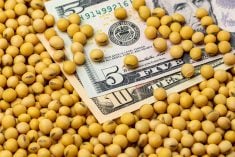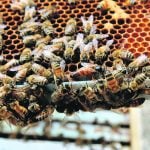Western Canadian feeder cattle values were quite variable over the last week as feedlot managers were paying premiums for quality features. Feeding margins have become so fine-tuned over the past year that any calf lacking performance quality was discounted accordingly.
Order buyers have sharpened their senses and there is no anxiety if they have to sit on their hands until the right-quality cattle come through the ring. Therefore, the market is difficult to define, with similar-weight cattle selling at various price levels.
Alberta fed cattle were selling near 52-week highs in the range of $124 to $125.50 per hundredweight (cwt). Profitable feeding margins provided little incentive to bid up replacement cattle because this may be short-term. Wholesale beef values were slightly softer this week, which will temper further upside in the fed market. Secondly, feeders coming on the market will be sold during the summer months and June live cattle futures continue to trade at a $4 discount to the nearby December contract.
Read Also

U.S. grains: Soy futures post biggest monthly gain in nearly five years on China trade optimism
U.S. soybean futures climbed to a 15-month high and posted their biggest monthly gain in nearly five years on Friday following a rally fueled by the prospect of revived exports to China.
Top-quality steers weighing 400 to 450 pounds were readily selling in the range of $200-$210/cwt in southern Alberta. A smaller group of exotic medium-frame heifers weighing from 760 to 810 lbs. sold for $135/cwt in the Calgary area. Larger-frame silver Charolais-cross steers averaging just over 700 lbs., with all documents, sold for $169 delivered in the Lethbridge area.
The U.S. Department of Agriculture’s cattle on feed report showed October placements up 10 per cent over year-ago levels. This could add further pressure to the summer fed marketings and will weigh on nearby feeder cattle prices. There are also ideas that fourth-quarter beef production will come in larger than anticipated, so fed cattle prices may have reached their highs for the time being.
I’m expecting a short-term bounce in the barley market over the next month and with winter conditions settling in across Western Canada, buying enthusiasm for replacement cattle may be somewhat softer toward the end of the year. Look for the feeder market to hold value over the next month, but quality features will be a larger price influence moving forward.
— Jerry Klassen is a commodity market analyst in Winnipeg and maintains an interest in the family feedlot in southern Alberta. He writes an in-depth biweekly commentary, Canadian Feedlot and Cattle Market Analysis, for feedlot operators in Canada. He can be reached by email at [email protected] for questions or comments.












